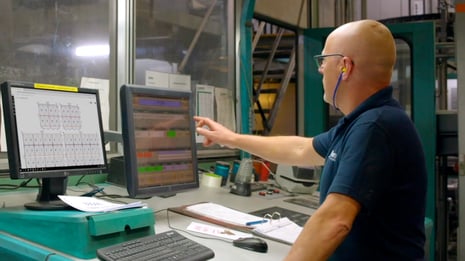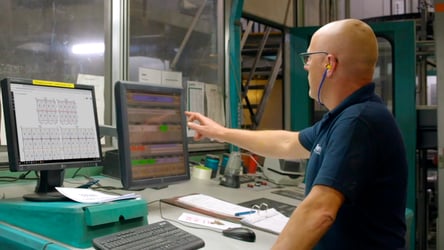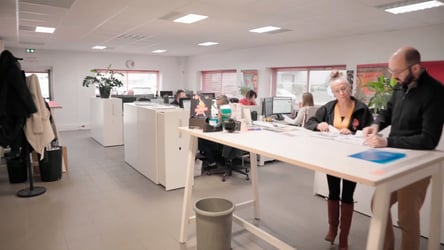The most successful printing companies out there are the ones that use their Management Information Systems (MIS) to their full potential and are always looking for new opportunities to evolve it....
Unlocking the Power of Your MIS: Tips from the Experts

The most successful printing companies out there are the ones that use their Management Information Systems (MIS) to their full potential and are always looking for new opportunities to evolve it.
This is the message that came across loud and clear during some recent interviews we had with our Implementation Specialists.
We conducted these interviews because we wanted to get tips and advice from them that would help our customers get the most out of their Management Information System (MIS). Here's what we found.
Contents
- Housekeeping - clearing out the clutter once a month has huge benefits
- Integration – reap the benefits of a connected workflow
- Work with your software partner to evolve your MIS
- Collect customer data to improve your CX
- Analyze your data using reporting tools
Housekeeping - clearing out the clutter once a month has huge benefits
An MIS sits at the heart of your business and touches every facet of your operations, so you need to make sure you give it a little TLC now and again. You need to regularly review it to make sure all your MIS users are inputting the correct information in the correct places. Here are some examples:
-
Are CRM users recording all the information you need for your reporting e.g. what sector does the customer operate in, which marketing campaign generated the inquiry?
-
Are jobs being marked as complete once all production and sales activity is completed?
-
Are deliveries being marked as complete once confirmation of delivery has been received?
-
Are invoices being closed down? This is particularly important if you want to generate accurate financial reports that will help you better prepare for the month ahead.
We recommend to our customers that they dedicate one day every month to housekeeping. By keeping on top of things in this way, they will have access to metrics that will help them assess performance and forward plan. They will also benefit from having accurate historical data that they can use to forecast for the year ahead, e.g. if the past two Novembers have been particularly quiet months, they can use this insight to plan promotions or target different types of customers in new markets.
According to our experts, the most successful printers they visit have someone who understands the MIS and who is given one day each month away from their usual duties to carry out these housekeeping tasks.
Integration – reap the benefits of a connected workflow
Another key differentiator that our experts see among printing companies, is their attitude towards integration and connectivity. It’s those printers that invest time in creating an automated and joined-up workflow that are leading the way in the industry. Some beneficial integrations we see are:
-
Accounts packages – Integrating into an accounts package removes the need for double entry, saving a LOT of time.
-
Press integrations – Using JDF to pass production information from your MIS to your presses is a very effective time-saver. Sending production feedback back into the MIS allows you to report on actual job costs versus estimated.
-
Storefronts – We have more than a few customers using storefronts, either ones they’ve developed themselves or from a third party, where their customers can order online and it comes straight into their MIS as an order, with no manual input involved.
This last example was a real game-changer for one of our customers who had created such a slick workflow using online ordering that they were generating too many orders each day to process manually. Integrating their MIS with their storefront resolved this for them and now, the first human touchpoint for these orders is when the job is sitting in their MIS ready to be printed!
Work with your software partner to evolve your MIS
When we work with customers, we like to think of ourselves as a partner, not just a software provider. We want our customers to see us as an additional member of their team, so we can help them continuously improve using technology.
So to make the most of your MIS, you should be taking advantage of this opportunity with your provider and communicating frequently with them. They’re there to answer questions, share expertise, bounce ideas off, and help during projects where they can. Our Implementation Specialists said they get a huge kick out of doing this, so don’t be afraid to make contact and build that relationship!
Collect customer data to improve your CX
To stand out from your competitors and win more business, you need to target your campaigns to the right people. But how do you know which customers to target with which product?
If your MIS has a built-in CRM, you can use it to see the unique products your customers and prospects are interested in, and your sales team can use this data for more targeted communications.
The printers that are using their MIS to record this sort of information about their customers are the ones that are increasing sales and delivering a higher-level customer experience; after all, a 2019 study from Hotjar showed that the second biggest frustration customers have with companies is that its employees don’t understand their needs.
So the advice from our experts is - to make sure you’re making the most out of the CRM capabilities in your MIS, and that you’re recording (and using!) your CRM data for targeted sales and marketing engagements and customer communications.
Analyze your data using reporting tools
Ever since the start of the economic downturn when the drive to cut costs and reduce waste became a primary concern, printers have realized the importance of data and reporting. Back then the MIS was used to generate KPIs and produce financial reports that helped to track these key metrics on a monthly or weekly basis. But now printing companies have even more tools in their armory that allow them to delve into their data and analyze it.
Business Intelligence (BI) tools provide printing executives with a way to find out exactly what’s going on in their business. Where reports have presented them with a static view of what has happened so far, BI shows them why things happened and highlights ways to improve things in the future.
It’s worth pointing out that the standard reports contained in your MIS are still incredibly valuable for analyzing your business performance. A BI tool complements these, but it doesn’t replace them. Reports are useful for showing the same information over periods of time, so people can get used to the format and information and see at a glance how they’re doing. But adding a BI tool to your armory gives you additional power – you’ll uncover trends, opportunities, and insights that you never knew were there, and you’ll be able to make better-informed decisions about your business.



